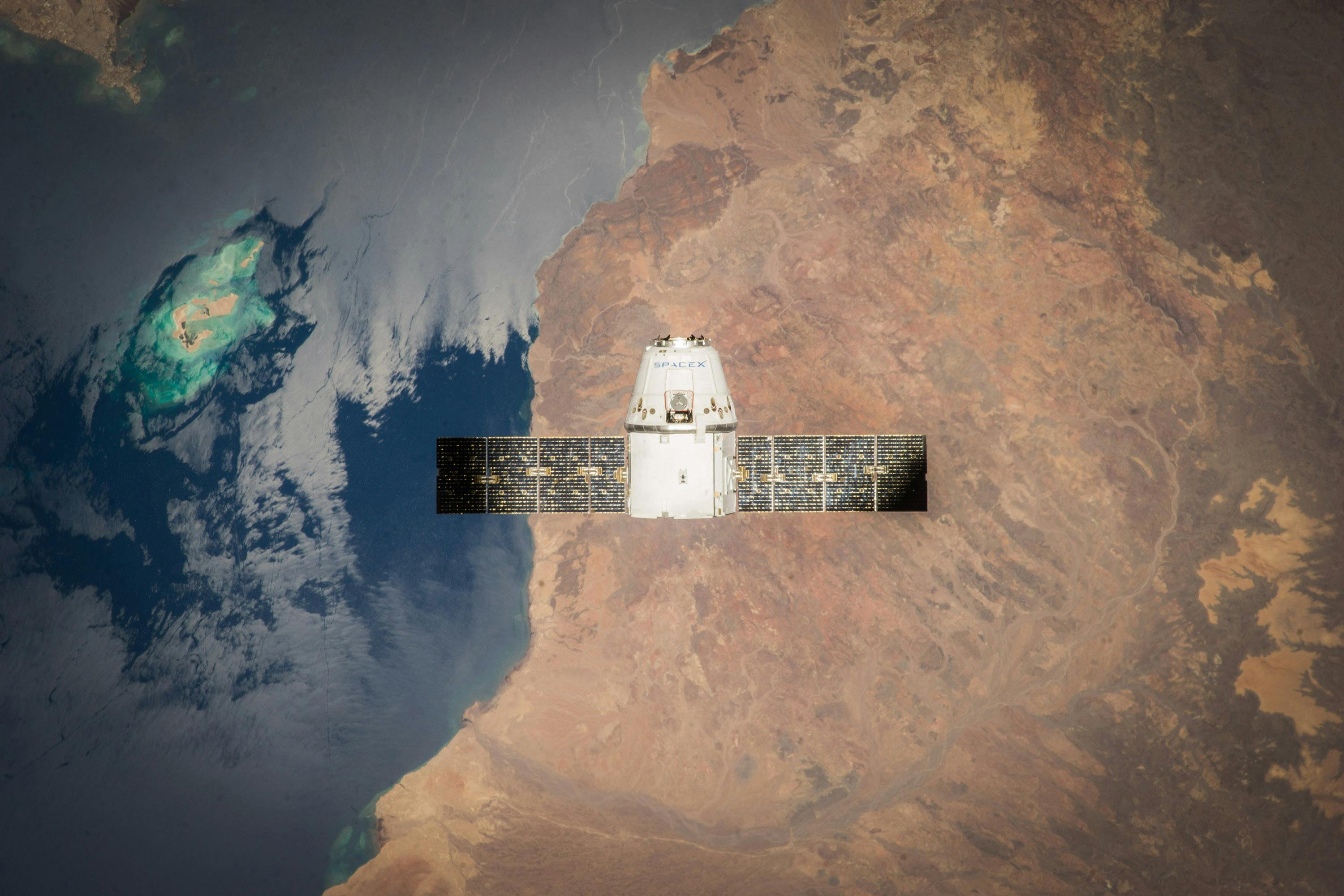Discover the fierce rivalry between Jeff Bezos’ Project Kuiper and Elon Musk’s Starlink in the battle for satellite internet supremacy. Explore the key features, differences, and future of global broadband in this entertaining comparison
23 October, 2024 | Posted by: Pablo Mendoza
Category: News | No Comments

The rivalry between Jeff Bezos and Elon Musk has gone beyond Earth, expanding into the skies as both billionaires vie to dominate the satellite internet space. Bezos’ Project Kuiper and Musk’s Starlink are both setting the stage for the future of global connectivity, each with its unique strengths and challenges. While Musk’s SpaceX has a head start with Starlink, Bezos is throwing down the gauntlet with Amazon’s Kuiper project, promising to deliver high-speed internet worldwide. Let's dive into the key aspects of each satellite internet system, the growing rivalry, and the impact they’re expected to have on the future of global broadband.
Bezos’ Project Kuiper, backed by a $10 billion investment from Amazon, aims to launch more than 3,200 satellites into low Earth orbit, promising to deliver high-speed internet to underserved regions globally. The project has recently secured major licenses and is on track to begin offering services as early as 2025.
On the other hand, Elon Musk’s Starlink, a part of his SpaceX venture, already has a significant lead. Starlink currently operates with over 6,000 satellites in orbit, and it has been providing commercial services since 2019. Starlink’s expansion has been rapid, with services already available in over 50 countries, and Musk has plans to launch up to 42,000 satellites.
The Bezos-Musk rivalry is no secret, with both billionaires often engaging in public spats. Musk once quipped that Bezos’ space endeavors were "years away" from being able to compete with Starlink. Bezos, in turn, accused Musk of trying to "smother competition" with Starlink’s overwhelming number of satellites. It’s clear that the battle between these two space moguls is heating up, with each seeking to outpace the other not only in space but also in the realm of satellite internet.
| Feature | Starlink | Project Kuiper |
|---|---|---|
| Launch Year | 2019 | Expected 2025 |
| Number of Satellites | 6,000+ (up to 42,000 planned) | 3,200 planned |
| Speed | 50-500 Mbps | Up to 400 Mbps |
| Latency | Low (20-40 ms) | Moderate (~40-50 ms) |
| Pricing | $110/month, $599 hardware | To be determined |
| Service Availability | Available in over 50 countries | Focus on U.S. rural areas initially |
In the race for satellite internet supremacy, Jeff Bezos’ Project Kuiper is slowly but surely positioning itself as a formidable competitor. However, Elon Musk’s Starlink maintains a strong lead with its head start and existing customer base. As both companies push the boundaries of satellite internet, their rivalry will continue to shape the future of global broadband. Stay tuned—this space race is far from over!
DirecTV is raising prices across its satellite and streaming services in October 2024 due to rising content fees from networks like Disney. Discover how the ongoing Disney-DirecTV dispute is impacting your favorite channels and what this price hike means for consumers.
23 October, 2024 | Posted by: Pablo Mendoza
Category: News | No Comments

In October 2024, DirecTV announced price increases across its satellite and streaming services in response to rising content distribution fees from companies like Disney. With Disney demanding higher carriage fees to broadcast channels like ESPN and ABC, DirecTV is passing these costs onto consumers. This is part of an ongoing shift in the TV industry, where the cost of premium content continues to rise.
The price hike, which ranges from $2 to $10 per month depending on the service package, will impact a variety of DirecTV’s offerings. For example, DirecTV Stream’s Choice package will increase by $6, while the Premier satellite package will see a $10 hike.
This price adjustment comes amid a heated dispute between DirecTV and Disney over carriage rights. Millions of DirecTV customers have lost access to Disney-owned channels, including ESPN and ABC, due to the blackout. This has sparked frustration among subscribers who rely on DirecTV to watch live sports and other premium TV content. As the conflict continues, DirecTV has placed the blame on Disney for demanding higher fees and forcing them to carry channels many subscribers may not want.
Disney, on the other hand, argues that it is seeking fair compensation for its content, which remains highly valuable in the current media landscape. The blackout has caused significant disruptions, especially for sports fans missing out on major events like *Monday Night Football*.
The DirecTV price hike is part of a larger trend across the TV industry. Content providers, particularly those like Disney who own high-demand channels, are raising the prices they charge distributors to carry their programming. This has led to a cascade of price increases across both traditional pay-TV services and streaming platforms.
Other providers, such as Dish Network, have also announced price hikes recently. Meanwhile, streaming services like Hulu + Live TV and YouTube TV are becoming more popular alternatives for consumers seeking more flexible options. However, even these services are seeing price increases as content costs rise.
For DirecTV customers facing this price hike, there are several options to consider. Switching to streaming services like Hulu + Live TV, Sling TV, or YouTube TV can provide access to many of the same channels, including ESPN and ABC, often with fewer long-term commitments and potentially lower prices.
Additionally, consumers can explore promotions and introductory offers that can provide savings during the first few months of service. However, it's important to remember that many of these streaming services are also susceptible to price hikes as they add more content and channels to their lineups.
DirecTV’s October 2024 price increase highlights the growing challenges facing traditional TV services as content costs continue to rise. With Disney demanding higher carriage fees and pushing its content strategy towards streaming, DirecTV is left with few options but to raise prices to stay competitive. Consumers will need to evaluate whether sticking with DirecTV is worth the cost or if it’s time to explore streaming services as a more flexible and cost-effective option.
Dive into the latest Disney and DirecTV dispute over Monday Night Football. Discover how Disney’s streaming empire is tackling competition and what this means for NFL fans caught in the middle.
23 October, 2024 | Posted by: Pablo Mendoza
Category: News | No Comments

The dispute boils down to one simple question: who controls how content is delivered to your screen? On one side, Disney, the home of ESPN and Monday Night Football, holds the cards to some of the most-watched programming in the world. On the other, DirecTV, a major satellite TV provider, is struggling to maintain its relevance in a world that is increasingly shifting toward streaming services.
At the heart of the conflict is Disney’s demand that DirecTV bundle several of its lesser-known channels with must-haves like ESPN. DirecTV, already battling subscriber losses to cord-cutting, is pushing back, arguing that the bundles drive up costs for consumers and offer little value. Disney, however, isn’t backing down, leaving millions of subscribers caught in the crossfire.
Adding fuel to the fire, DirecTV has filed a complaint with the FCC, accusing Disney of negotiating in bad faith and using anti-competitive tactics. As both sides dig in their heels, it’s clear that the future of how we watch live sports—particularly the NFL—is at stake.
If you’ve ever cheered for your team on a Monday night, you know that ESPN’s coverage of the NFL is a big deal. For Disney, ESPN is the crown jewel in their content lineup, and they’re well aware of its power to draw viewers. Losing access to this content would be a massive blow for DirecTV, as it could push more customers to explore other streaming options, such as Hulu + Live TV, Sling TV, or YouTube TV—all of which carry ESPN.
For many DirecTV subscribers, missing Monday Night Football feels like losing The Lion King without Simba's triumphant return. It's no surprise that sports fans are irate, especially considering the significance of the NFL in the world of American sports.
DirecTV, like Scar plotting his rise to power, faces a significant challenge. In an attempt to pacify angry subscribers, they’ve offered $20 credits and recommended alternatives like Sling TV or FuboTV to soften the blow. But it’s unclear how long these temporary fixes will work. Losing access to one of the biggest draws in live sports could accelerate customer migration to streaming platforms.
Disney, on the other hand, is playing the long game. They’re well aware that the traditional TV model is slowly fading and have begun positioning themselves as a streaming powerhouse. With the upcoming launch of a fully over-the-top ESPN streaming service, Disney is preparing to offer content directly to consumers, bypassing cable and satellite providers altogether. This shift could leave DirecTV in the dust as more viewers cut the cord and rely on streaming services to satisfy their sports cravings.
As the streaming landscape continues to evolve, Disney and DirecTV’s clash represents a larger battle between traditional pay-TV services and the new wave of streaming platforms. While DirecTV fights to keep its subscribers happy, Disney is hedging its bets on a future where consumers can access content on-demand without the need for cable or satellite.
For now, the fate of Monday Night Football hangs in the balance. But as Disney forges ahead with its streaming ambitions and DirecTV struggles to keep its footing, one thing is clear: viewers are in for a wild ride. Will DirecTV find its Simba moment and reclaim the throne, or will Disney’s streaming empire continue to expand until it covers the whole kingdom? Only time will tell.
If you’re one of the many football fans caught in the middle of this corporate drama, don’t worry. There are still ways to watch Monday Night Football. Streaming services like Hulu + Live TV, Sling TV, FuboTV, and YouTube TV all carry ESPN, ensuring you don’t miss a second of the action.
``` Here is the complete HTML version of the expanded article on the Disney and DirecTV dispute. Let me know if you need any changes!Stay ahead of the curve with our comprehensive guide to cybersecurity in 2024. Learn about emerging threats like AI-powered cyberattacks, ransomware 2.0, and quantum computing risks, and discover strategies to protect your online presence in the digital age.
23 October, 2024 | Posted by: Pablo Mendoza
Category: News | No Comments

Advanced Phishing: Cybercriminals are now leveraging AI to create more convincing phishing attacks. AI can analyze large datasets to craft personalized phishing emails that are much harder to detect.
Automated Malware: AI is also being used to develop malware that can adapt to and evade traditional security measures, making it more challenging for cybersecurity systems to detect and neutralize these threats.
Data Exfiltration: Ransomware attacks are evolving beyond simple encryption of data. In 2024, ransomware attackers are increasingly exfiltrating sensitive data before encrypting it, threatening to release the data publicly if the ransom is not paid.
Targeted Attacks: Attackers are focusing on high-value targets, such as financial institutions and healthcare providers, where the potential payoff is significant, and the consequences of downtime are severe.
Increased Attack Surface: The proliferation of IoT devices, from smart home gadgets to industrial sensors, has expanded the attack surface for cybercriminals. Many IoT devices have weak security protocols, making them prime targets for hackers.
Botnet Attacks: Cybercriminals can exploit vulnerable IoT devices to create large botnets, which are then used to launch Distributed Denial of Service (DDoS) attacks, overwhelming websites or networks with traffic.
Breaking Encryption: As quantum computing technology advances, it poses a significant threat to traditional encryption methods. Quantum computers could potentially crack widely used encryption algorithms, compromising the security of sensitive data.
Deepfakes and Voice Cloning: The use of AI to create deepfake videos and cloned voices is becoming more prevalent. Cybercriminals can use these tools to impersonate individuals in positions of authority, tricking employees or executives into divulging sensitive information or authorizing fraudulent transactions.
Trust No One: The Zero Trust model assumes that threats could exist both inside and outside the network. It requires verification for every device, user, and application attempting to access the network, minimizing the risk of unauthorized access.
Layered Security: MFA adds an extra layer of security by requiring users to provide two or more verification factors, such as a password and a fingerprint, before granting access. This makes it significantly harder for attackers to gain unauthorized access, even if they have stolen one set of credentials.
Patch Management: Keeping software and devices up to date with the latest security patches is crucial in protecting against known vulnerabilities. Many cyber attacks exploit outdated software with known security flaws.
Proactive Defense: AI-driven cybersecurity tools can analyze vast amounts of data in real-time to detect anomalies and respond to threats before they cause harm. These tools are essential in defending against AI-powered attacks.
Security Awareness: Human error remains a significant vulnerability in cybersecurity. Regular training and awareness programs can help employees recognize phishing attempts, understand the importance of secure passwords, and follow best practices for data protection.
Disaster Recovery: Regularly backing up critical data ensures that, in the event of a ransomware attack or data breach, you can restore your information without having to pay a ransom. Store backups offline or in a secure cloud environment.
Security Operations Center (SOC): Establishing a SOC that monitors network activity 24/7 allows for the rapid detection and response to security incidents, minimizing potential damage.
The cybersecurity landscape in 2024 is more complex and challenging than ever before, with emerging threats driven by advancements in AI, quantum computing, and the IoT. However, by understanding these threats and adopting robust security strategies, individuals and organizations can protect their online presence and stay ahead of cybercriminals. Continuous vigilance, investment in advanced security technologies, and a culture of security awareness are essential in safeguarding against the evolving cyber threats of the digital age.
Explore how streaming platforms like Netflix, Hulu, and Amazon Prime Video have revolutionized television forever. Discover the impact on traditional TV networks, the rise of original content, and how internet providers are partnering with streaming services to enhance the viewing experience.
23 October, 2024 | Posted by: Pablo Mendoza
Category: News | No Comments

One of the most significant changes brought about by streaming platforms is the shift from scheduled programming to on-demand viewing. Traditional TV networks relied on set schedules, with viewers tuning in at specific times to watch their favorite shows. Streaming services like Netflix, Hulu, and Amazon Prime Video revolutionized this model by offering entire seasons of shows at once, allowing viewers to binge-watch content at their convenience. This on-demand model gives viewers more control over their watching experience, eliminating the need to adhere to network schedules.
The rise of streaming platforms has had a profound impact on traditional TV networks. With more viewers cutting the cord and opting for streaming services, networks have seen a decline in viewership and advertising revenue. Many networks have responded by launching their own streaming platforms, such as NBC's Peacock and CBS All Access (now Paramount+), to compete in the digital space. These networks are also increasingly releasing content on streaming services either simultaneously with or shortly after their TV premieres, recognizing the importance of reaching audiences where they are.
Streaming platforms have also spurred a new golden age of television by investing heavily in original content. Netflix’s “House of Cards” was one of the first major successes in this arena, proving that streaming services could produce high-quality, critically acclaimed shows. Since then, platforms like Amazon Prime Video, Disney+, and HBO Max have followed suit, producing award-winning original series and films. This has increased competition for talent and led to more diverse and innovative storytelling, as creators are given the freedom to explore new ideas without the constraints of traditional network television.
The rise of streaming has also changed viewing habits and consumer expectations. Viewers now expect to have access to content on multiple devices, from smartphones and tablets to smart TVs and laptops. Streaming services have responded by offering apps and interfaces that allow seamless viewing across devices. Additionally, the subscription model used by most streaming platforms has led to the decline of traditional advertising, with many viewers opting to pay for ad-free experiences.
Streaming platforms have a global reach that traditional TV networks could never achieve. Shows and movies produced in one country can gain international popularity with the click of a button, fostering cross-cultural exchanges and introducing audiences to content they might never have encountered otherwise. For example, Netflix’s “Money Heist” (La Casa de Papel), a Spanish series, became a global phenomenon, demonstrating the power of streaming to bring diverse stories to a worldwide audience.
In response to the growing popularity of streaming, many internet providers have formed partnerships with streaming services to offer bundled deals, enhanced streaming experiences, or exclusive content.
Despite their success, streaming platforms face challenges, including content saturation, rising production costs, and increasing competition. As more companies enter the streaming space, consumers are faced with the dilemma of choosing between multiple subscriptions, leading to potential subscription fatigue. Additionally, the race for exclusive content has driven up costs, making it more challenging for smaller platforms to compete.
The future of streaming will likely involve continued innovation, with platforms exploring new ways to engage viewers, such as interactive content and virtual reality experiences. As streaming continues to evolve, it will undoubtedly remain a central force in the entertainment industry, shaping the future of television for years to come.
The rise of streaming platforms has forever changed the television landscape. By offering on-demand content, investing in original programming, and reaching global audiences, these platforms have disrupted traditional TV models and redefined how we watch television. As streaming continues to grow and evolve, it will be fascinating to see how it further influences the world of entertainment.